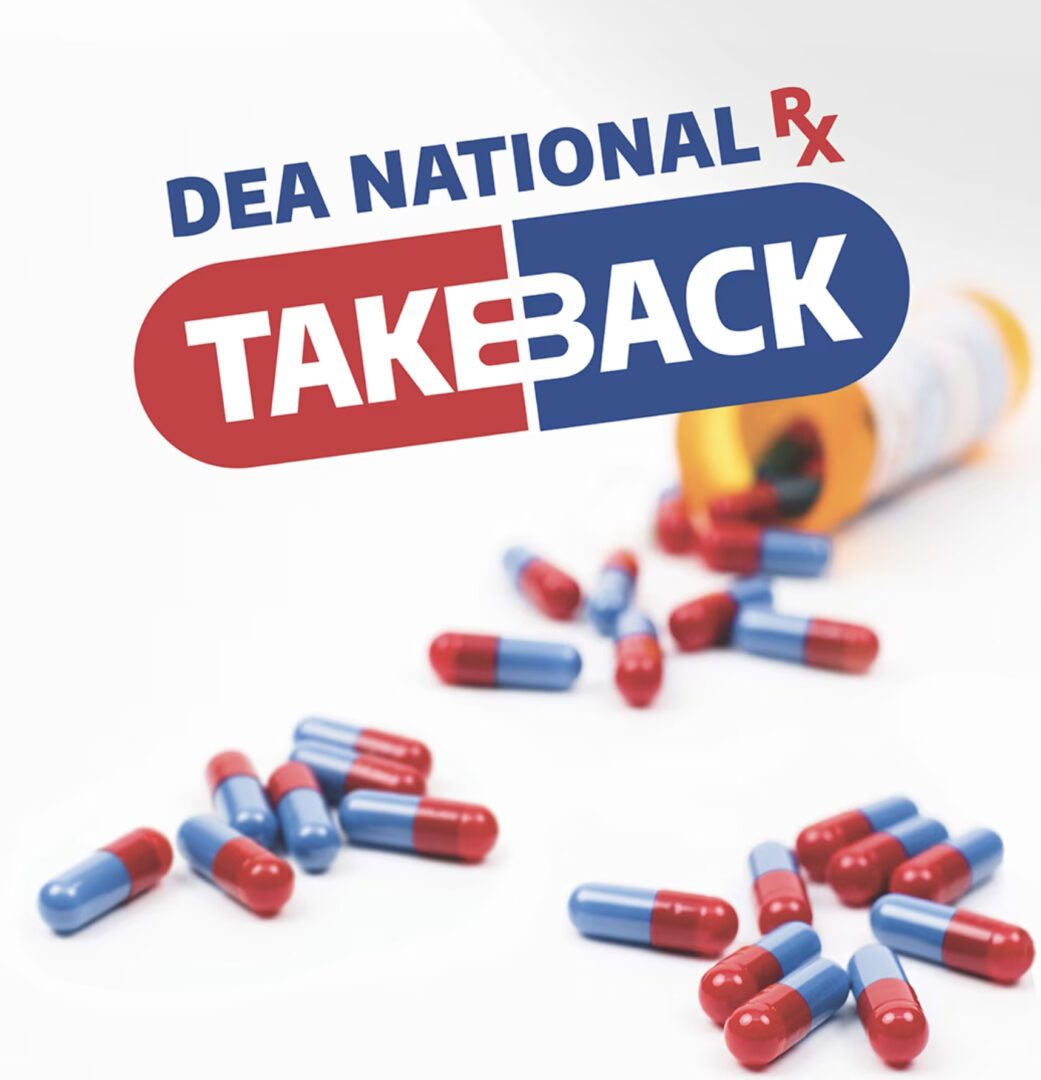Search by Color or Cause


The National Prescription Drug Take Back Day provides a safe, convenient, and responsible means of disposing of prescription drugs. This day also educates the general public about the potential for abuse of medications. The Drug Enforcement Administration hosts National Prescription Take Back Day. It takes place during the last Saturday of the months of April and October. In addition, DEA sponsors collection sites throughout the country where medications can be dropped off for proper disposal. Lastly, Customs and Border Patrol encourages employees and family members to bring any expired, unused or unwanted medications to designated collection sites for proper disposal.
Wear a red and blue enamel awareness ribbon pin to highlight National Prescription Drug Take Back Day. You may save a life by encouraging others to properly dispose of, for example, unused or expired medications.
Did you know that prescription drugs thrown in the trash can be retrieved to be abused or illegally sold? Or, further, that drugs flushed down toilets contaminate the water supply? The drug overdose epidemic in the United States is considered a public health, public safety and national security threat. We can help prevent and reduce medication misuse and opioid addiction by properly disposing of any unneeded medications at home. Too often, unused prescription drugs find their way into the wrong hands, creating a dangerous and often tragic situation.
To prepare for Take Back Day:
The U.S. Drug Enforcement Administration (DEA) hosts a no-questions asked National Prescription Drug Take Back event twice per year. On this day, collection sites are set up in local cities throughout the nation for safe disposal of prescription drugs. This includes opioids. Collection sites may be found at retail, hospital, or clinic pharmacies, or law enforcement facilities.
Drug overdoses skyrocketed during the COVID-19 pandemic. Over 106,000 drug overdose deaths were reported in the 12 month period ending May 2023. This is compared to 69,000 deaths in the 12 months ending October 2019. Disposing of unneeded or expired medications helps fight this crisis. This is because many abused prescription drugs are found in the home.
Opioids, including synthetic opioids like illicit fentanyl, were responsible for many of these deaths. In fact, opioids are a factor in 7 out of every 10 overdose deaths.
The DEA wants to ensure the public that there are safe ways to dispose of unwanted prescription drugs, including at-home disposal and year-round collection sites.
Be aware that some medicines should only be flushed when drop off facilities are not available because they are too dangerous to leave in the trash. See the list of drugs that SHOULD be flushed here. Be sure to follow your local community regulations for flushing of medications.
Many medications can be thrown in the trash. Follow the steps (below) before disposing of them. Medicines include prescription and over-the-counter (OTC) drugs in pills, liquids, drops, patches, and creams. Look at the package insert of your medication to see if special instructions exist for disposal.
Inhalers for asthma or other breathing conditions could be dangerous if punctured or thrown into a fire or incinerator. To properly dispose of these products and follow local regulations and laws, contact your trash and recycling facility.
Follow these steps to dispose of most medicines in the household trash: